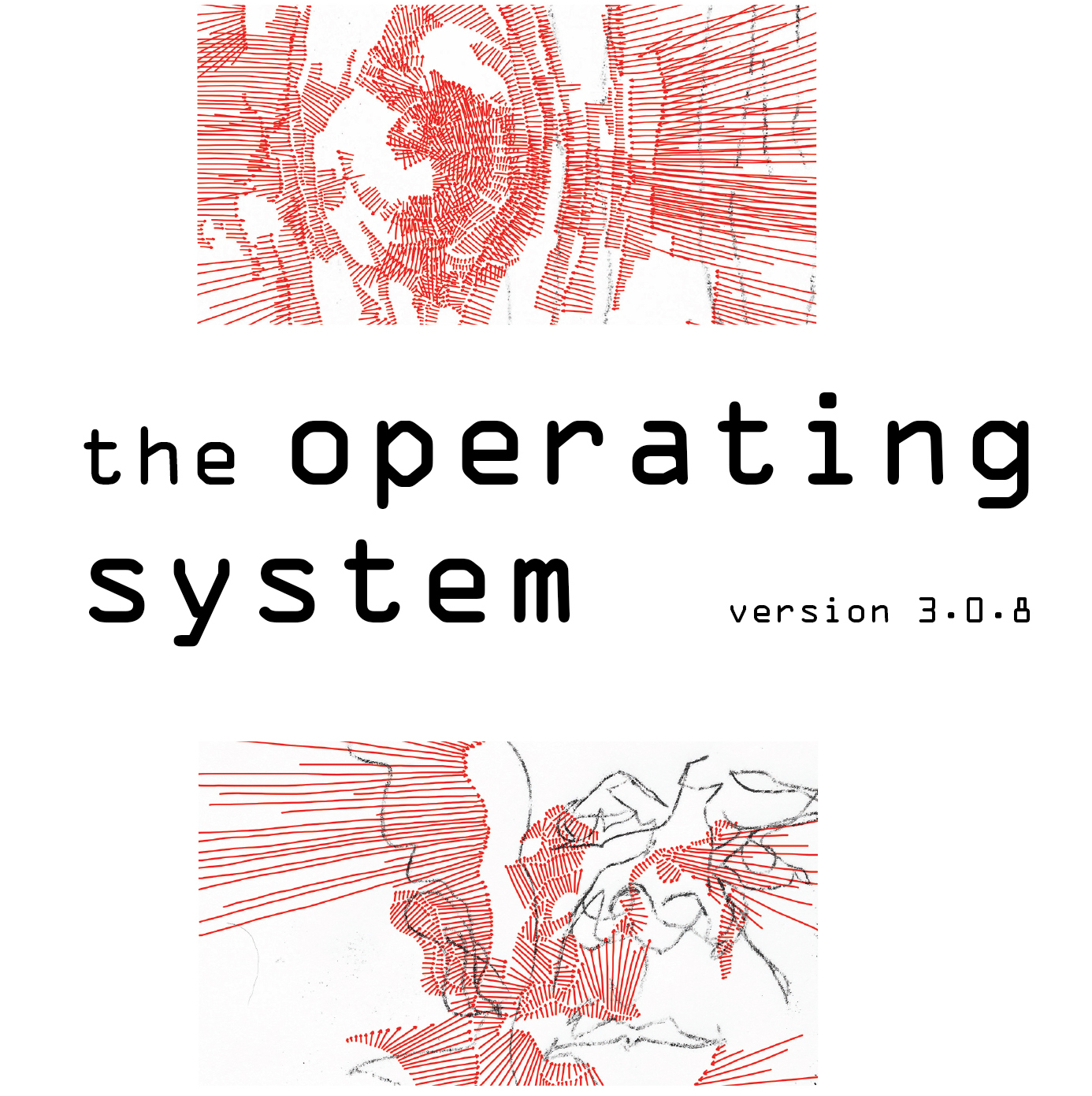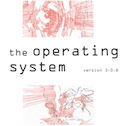COLLABORATIONS :: JOHN SUPKO and BILL SEAMAN's s_traits :: ALBUM RELEASE at CLOCKTOWER
[articlequote]Spellbindingly beautiful… The more time you spend with these works, the more they yield”– Steve Smith, Time Out NY [/articlequote]
[line]
[box][teaser]Join THE OPERATING SYSTEM at CLOCKTOWER tomorrow evening for a very special ALBUM RELEASE PARTY for composer John Supko‘s futuristic CD, s_traits, created in collaboration with media artist Bill Seaman and the intelligent computer program, bearings_traits…, jointly hosted by Pioneer Works.
For this event only, new music champions Wet Ink Ensemble perform in collaboration with the bearings_traits program, while a video program by Seaman projects mesmerizing, free-form images in the space.
After the show, we’re heading over to the after party a few blocks away at Van Dyke Park (98A Van Dyke Street), New Amsterdam Records’ headquarters.
For more information go HERE
The event is FREE and open to the public![/teaser] [/box]
Composer John Supko’s s_traits, created in collaboration with media artist Bill Seaman, comes out Tuesday, November 4 on the Manchester-based Cotton Goods label. The second album devoted to Supko’s music, the release follows drawn only once, the composer’s work for duo Due East (Erin Lesser, flute; Greg Beyer, percussion) on the New Amsterdam Label in 2011. To mark the occasion, NYC’s acclaimed Wet Ink Ensemble will appear on Wednesday, October 29 (7:30 pm) at Pioneer Works in Red Hook, Brooklyn, playing along with bearings_traits, the improvising software designed by Supko to help create s_traits. To complement the music, a generative video program devised by Seaman will project spontaneous images in the space.
s_traits is the product of three minds: two human, one artificial. With a discarded version of the electronic track to Supko’s percussion duo Straits as a starting point, Supko and Seaman compiled more than 110 hours of audio source material over a three-year period, including field recordings, analog and digital noise, acoustic and electronic instruments, cassette recordings of Supko’s juvenilia, recordings of Seaman and Supko playing the piano (inside and out), and soundtracks from documentaries made in the 1960’s and 70‘s.
During that time, Supko developed the intelligent bearings_traits software to “navigate” this vast ocean of sound. The program selects samples from the database – ranging from barely a second to a few minutes in length – and juxtaposes them to create spontaneous, multi-track compositions. Twenty-six of these “first drafts” have been developed by the two collaborators into the 77-minute album that is s_traits. Thirteen tracks were shaped by Supko, thirteen by Seaman, alternating odd- and even-numbered tracks (though we’re left, intentionally, without specification on which is which, a clever nod to the collaborative third mind, perhaps, a la Burroughs and Gysin — wherein neither artist fully claims responsibility for the production of their group-think.)
The title, s_traits, plays on Supko’s original piece, Straits, and the “traits” of the source material, which find their way into the final product through unforeseen channels. Supko’s Straits had been inspired by a Kenneth Koch poem of the same name; for s_traits, Seaman wrote a new text, which appears on the CD cover. Each track opens with a fragment of that text, spoken by Seaman and assigned randomly by the software to serve as an introduction and title.
Says Supko, “The computer did things we would probably never do, because it was able to search vast amounts of music very quickly, and put together many fragments in ways that would have taken us many months to try out ourselves. The results are both unpredictable – since it’s impossible to know which fragments from the 110 hours of material the computer will select and spin into melodies, rhythms, and harmonic accompaniments – and yet oddly coherent.
“On its own, bearings_traits came up with things that were totally charming and strange and wonderful, but sometimes a bit too mechanical or impassive. Our approach was to keep the computer’s crazy inventiveness but to refine it in ways only a human (at least for the moment) can. So, for instance, if I heard something that had some emotional attraction for me, I would enhance the effect. If I heard a ghostly melody, I’d try to support it in the texture. If there was potential for a dramatic moment of attack or climax, I’d try to bring it out.
“Eventually I realized that the software I made was not only a compositional tool but also an on-the-fly improvising system, suitable for live performance in collaboration with human musicians or as an installation on its own.”
The bearings_traits program has only begun to achieve its generative potential, however — as will be surely seen in the live collaboration with Wet Ink tomorrow, and here, in bonus tracks created by the program through a clever tie-in to the composer’s social media community.
The tracks you find above were specially generated for people who tweeted #findmybearingsto @supko in the past weeks, further proof of the innovative minds of these composers — reaching beyond the album into an audience of listeners and colleagues to further demonstrate the working of the bearings_traits application, which “composed” these unique tracks for each person who engaged via the Twitter network. Want your very own? Tweet #findmybearings to @supko and get your very own 30″ track! Each track begins with Bill Seaman reading a fragment of his text, then the computer pulls together music from a 110-hour database of sounds that Seaman & Supko accumulated over several years.
s_traits, released on Cotton Goods (UK), is distributed in the US through CD Baby, and in Europe through Boomkat. A limited number of copies in a deluxe edition with a specially-designed A3 cover will also be available from Boomkat. It is now available for pre-order in both digital and physical formats, with instant download of the first track here.
**WXQR’s new music devoted sister site, Q2, has just released this terrific review of the album, from Doyle Armbrust, from which you can stream its entire contents! Lucky you. **
[line]
A B O U T T H E C O L L A B O R A T O R S
Supko and Seaman serve on the faculty of Duke University, where they co-direct Duke’s Emergence Lab, dedicated to “the creation of generative works of art that include many different media elements and processes.”
Called “spellbindingly beautiful” (Steve Smith, Time Out New York), the work of composer John Supko (pronounced ‘SUHP-ko) explores intersections: chance and intention; traditional music notation and real-time score generation; sound and spoken text; installation and performance; human and computer creativity. In recent years, Supko has been developing generative software to navigate his vast archives of field recordings, sampled acoustic and digital instruments, noise, and voice recordings. He uses this software to find unexpected compositional possibilities as well as to create dynamic sonic environments that are integrated into live performance with human musicians. Supko has also been experimenting with new forms of documentation for his music. Works such as A Free Invention for George Pitcher exist solely as software that ‘performs’ a new version of itself each time it is activated. Currently the Hunt Family Assistant Professor of Music at Duke University, Supko holds degrees from the Indiana University Jacobs School of Music (BM) and Princeton University (PhD). For more information please visit www.johnsupko.com .
Bill Seaman‘s work employs various technological means to explore image/music/text relations through an expanded technological poetics. The combination and recombination of media elements and processes in interactive and generative works of art unfold as a process of meaning/becoming he calls “Recombinant Poetics.” Historically, he has explored interactive computational meta-meaning systems that enable participants to become mindfully aware of how meaning arises and changes through use. His music often combines his own structured piano improvisations and composed selections of samples as well as computational and analog abstractions. Seaman is interested in new forms of computation and learning systems in addition to notions of computational creativity: using the computer as a generative tool as well as working toward future intelligent computational systems. He is currently exploring notions surrounding “Recombinant Informatics,” a multi-perspective approach to inventive knowledge production. He is Professor of Art, Art History & Visual Studies at Duke University. Seaman holds degrees from the San Francisco Art Institute (BFA), MIT (MSVisS) and the Center for Advanced Inquiry in Interactive Art at the University of Wales (PhD). For more information please visit www.billseaman.com.
[line]
V E N U E S + P A R T N E R S
Housed in a former iron works factory, Pioneer Works Center for Arts and Innovation is located at 159 Pioneer Street (between Imlay & Conover streets) in the Red Hook neighborhood of Brooklyn. The Center enacts its vision for a more complex, creative and productive society through educational programming, exhibitions, publications, residencies, lectures and performances.
Van Dyke Park is New Amsterdam Records’ 3000-square-foot multipurpose warehouse space in Red Hook. It is located at 98A Van Dyke St., just a few blocks from Pioneer Works. In addition to housing New Amsterdam’s office and storage, the space includes an open loft performance area with 20 foot ceilings, functioning bathrooms and kitchen, and four separate studios. www.newamsterdampresents.com
Clocktower Productions is a non-profit art institution working in the visual arts, performance, music, and radio. Founded in 1972 in Lower Manhattan by MoMA PS1 Founder Alanna Heiss, Clocktower is the oldest alternative art project in New York, and its radio station, Clocktower Radio, was founded in 2003 as one of the first all-art online museum radio stations in the world. The institution functions as a laboratory for experimentation, working closely and collaboratively with artists, musicians, curators, writers and producers to develop, realize and present innovative and challenging work in all media, ranging from installation to performance and from experimental music to radio theater. Visit www.clocktower.org for more information.
Wet Ink Ensemble is a septet comprised of a core group of composer-performers: Erin Lesser (flutes), Joshua Modney (violin), Ian Antonio (percussion), Kate Soper (vocals), Alex Mincek (saxophones), Eric Wubbels (piano), and Sam Pluta (electronics). The members of the Ensemble collaborate in a band-like fashion – writing, improvising and preparing pieces together over long stretches of time. Wet Ink Ensemble recently released its second solo album, RELAY, with works by George Lewis, Sam Pluta, Rick Burkhardt, Kate Soper, Eric Wubbels, and Alex Mincek. These pieces were performed and toured for two years prior to being recorded, resulting in a recording with an intensity and precision seldom found in concert music recordings. To hear more, visit www.wetink.org.
[line]
[recent_post_thumbs border=”yes”]




